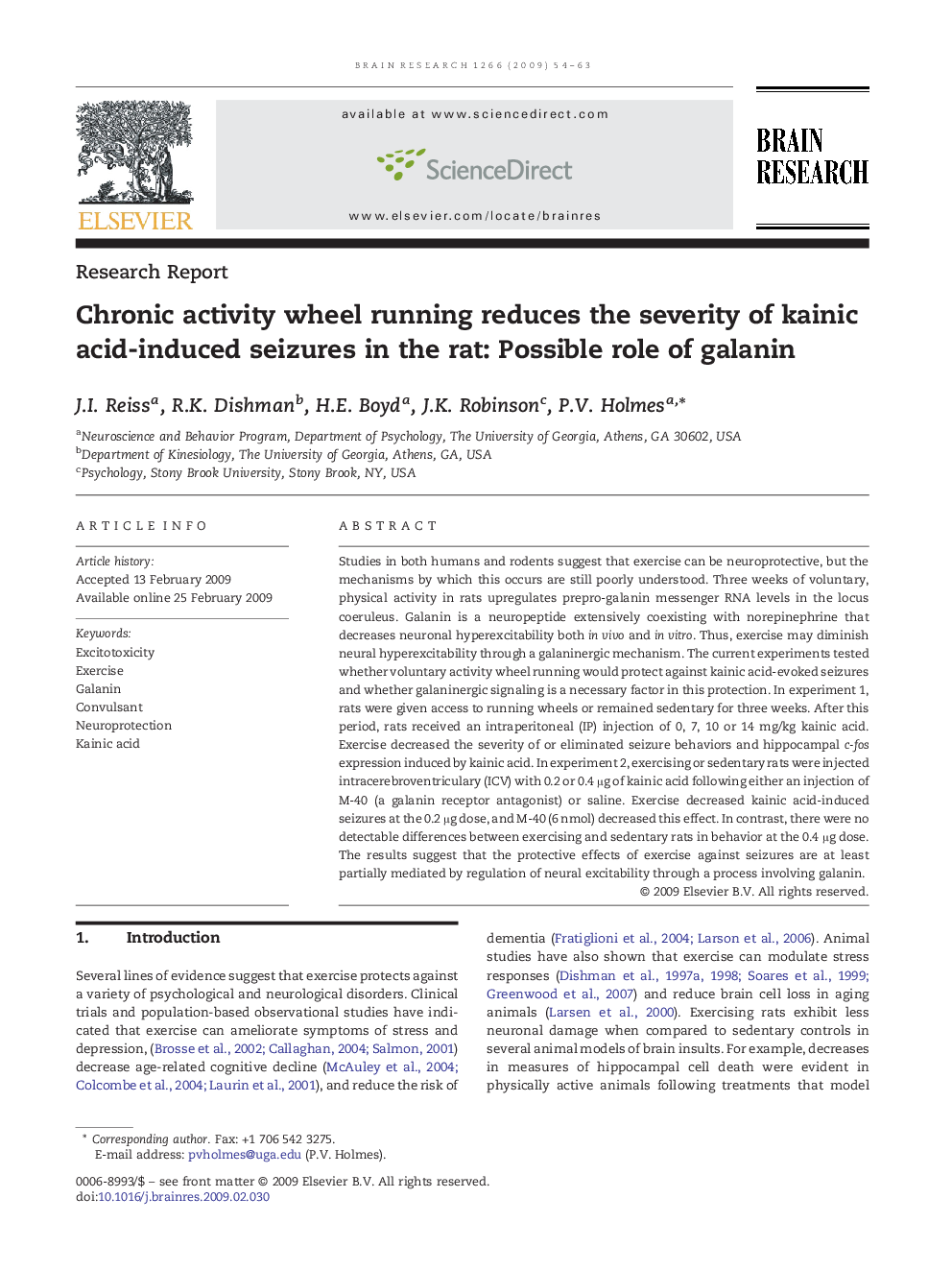| Article ID | Journal | Published Year | Pages | File Type |
|---|---|---|---|---|
| 4328351 | Brain Research | 2009 | 10 Pages |
Studies in both humans and rodents suggest that exercise can be neuroprotective, but the mechanisms by which this occurs are still poorly understood. Three weeks of voluntary, physical activity in rats upregulates prepro-galanin messenger RNA levels in the locus coeruleus. Galanin is a neuropeptide extensively coexisting with norepinephrine that decreases neuronal hyperexcitability both in vivo and in vitro. Thus, exercise may diminish neural hyperexcitability through a galaninergic mechanism. The current experiments tested whether voluntary activity wheel running would protect against kainic acid-evoked seizures and whether galaninergic signaling is a necessary factor in this protection. In experiment 1, rats were given access to running wheels or remained sedentary for three weeks. After this period, rats received an intraperitoneal (IP) injection of 0, 7, 10 or 14 mg/kg kainic acid. Exercise decreased the severity of or eliminated seizure behaviors and hippocampal c-fos expression induced by kainic acid. In experiment 2, exercising or sedentary rats were injected intracerebroventriculary (ICV) with 0.2 or 0.4 μg of kainic acid following either an injection of M-40 (a galanin receptor antagonist) or saline. Exercise decreased kainic acid-induced seizures at the 0.2 μg dose, and M-40 (6 nmol) decreased this effect. In contrast, there were no detectable differences between exercising and sedentary rats in behavior at the 0.4 μg dose. The results suggest that the protective effects of exercise against seizures are at least partially mediated by regulation of neural excitability through a process involving galanin.
